
- Pictures of Hessian Fly
- Pictures of Hessian Fly Damaged Wheat
- Hessian Fly Biology and Life Cycle at Various Locations
- Effect of Hessian Fly on Wheat Yield
- Resistance of Wheat Varieties to Hessian Fly
- Effectiveness of Hessian Fly Resistance Genes
- Agronomic Practices That Affect Hessian Fly Populations
- Seed Treatments
- Foliar Insecticides
- Home
Symptoms of Hessian Fly Damage in Wheat
Watch a video on identifying and controlling Hessian fly courtesy of NC State.
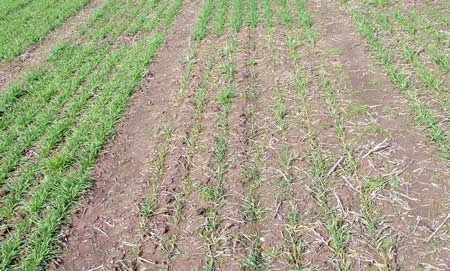
Note the thinned stand of the plot in the center, compared to the plot on the left. Plants infested with Hessian fly in the seedling stage often die.
Photo courtesy of the Alabama Cooperative Extension System.

Thin stand caused by the death of Hessian fly infested plants.
Photo courtesy of the Alabama Cooperative Extension System.
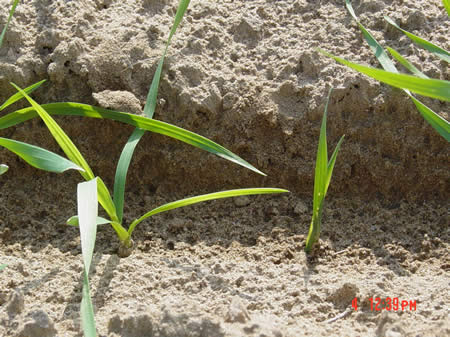
When wheat is infested in the seedling stage, stunting results in only the leaf blades emerged above the ground.
Photo courtesy of the Alabama Cooperative Extension System.
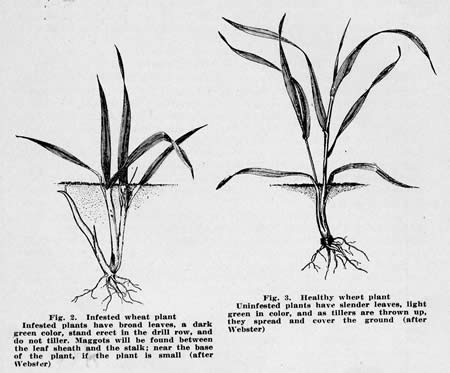
See diagram above from Davis, J.J. 1918. The control of three important wheat pests in Indiana.
Purdue Univ. Agric. Expt. Sta. Circular 82.
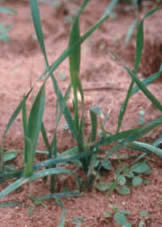
The infested plant on the left has a short, wide leaf, characteristic of Hessian fly infestation. The wide leaves are often a dark blue-green color.
Photo courtesy of the Alabama Cooperative Extension System.
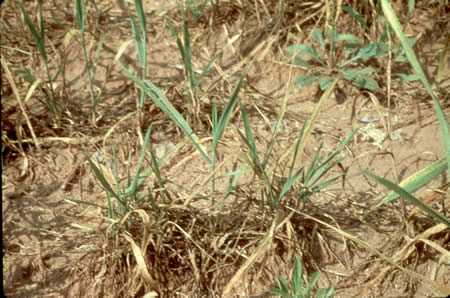
Tillers infested with Hessian fly frequently die, resulting in this characteristic symptom.
Photo courtesy of the University of Georgia.
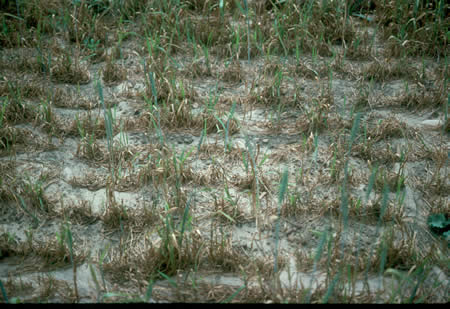
An infested wheat field showing thin stand with many dead tillers.
Photo courtesy of the Alabama Cooperative Extension System.
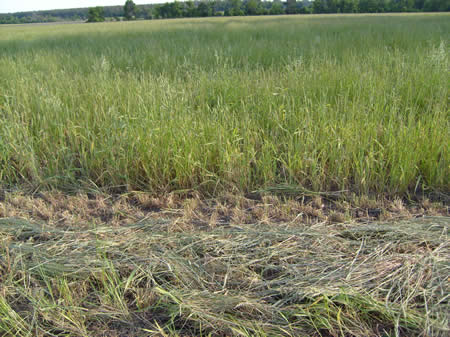
Hessian-fly infested wheat that was harvested for hay in late May. The wheat was severely stunted. There were fewer than 4 heads per square foot.
Photo courtesy of the Alabama Cooperative Extension System.
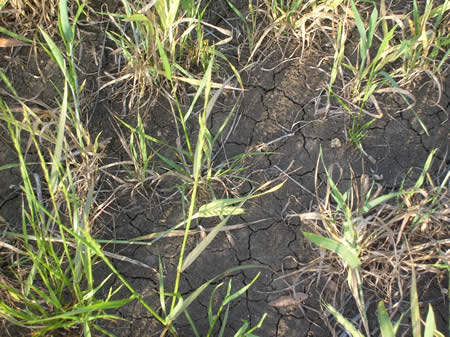
A view of this field from above.
Photo courtesy of the Alabama Cooperative Extension System.
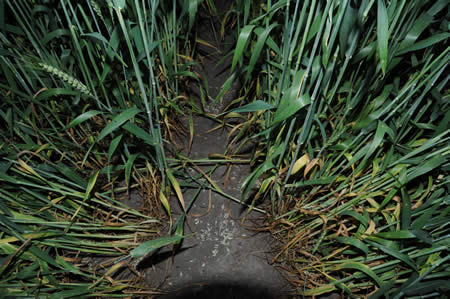
Wheat stems infested by Hessian fly are weak and brittle, which can cause the wheat to lodge.
Photo courtesy of Dominic Reisig, North Carolina State University
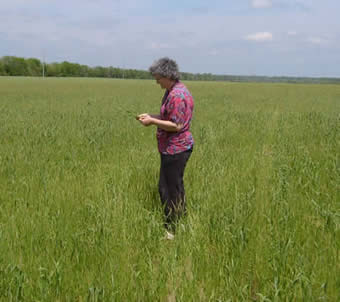
If you walk out into a wheat field and think "This field doesn't look right," chances are good it is infested with Hessian fly. The combination of a thin stand, dead tillers, and stunted plants is characteristic of Hessian fly damage. At this time of year, the wheat in non-infested fields was headed out and was 3 feet tall (see below).
Photos courtesy of the Alabama Cooperative Extension System.
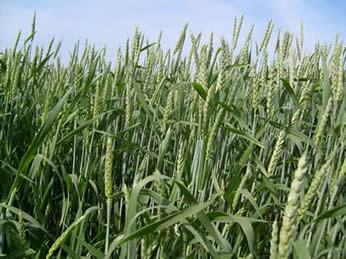

 Menu
Menu


